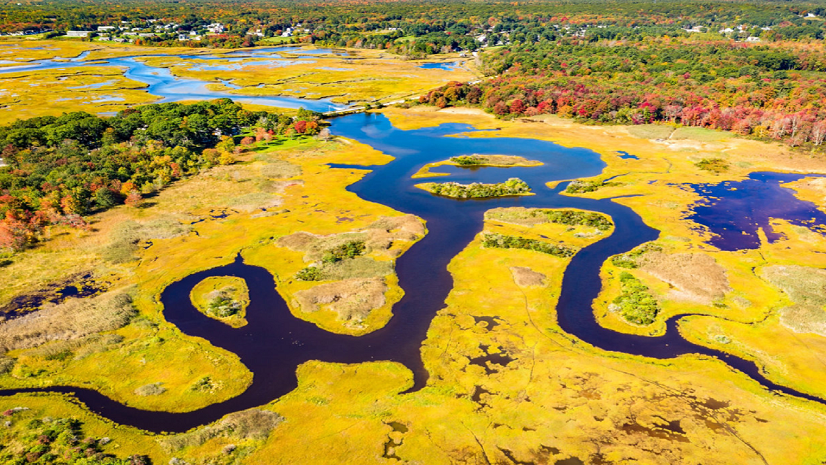I’m writing this from the living room of my mom’s apartment in Nashville. I wish I could say this was a planned trip, but it wasn’t.
I’ve had a lot of titles in my life, but one I never though I’d have is “Climate Refugee.” Although, her accommodations have given us an unusually cozy refugee experience that needles greatly at the survivor’s guilt. We’re lucky and we know that we will head home eventually. This isn’t the story many survivors will be able to tell.
Helene Descends
The night Helene hit Asheville, we felt pretty secure. We had a couple jugs of water and we stocked up the fridge on (very perishable) food, and made sure the grill had a full propane tank. We assumed we’d lose electricity, you know… for just a couple hours. My dad had been visiting that week and while the news had some coverage about the forthcoming storm, the tone didn’t seem alarmed and so neither were we.
The next morning, I woke up to my husband yelling from the living room for me to get out of the bedroom – the room closest to the large pines in the back yard. I tried to turn on my light but nothing happened. From 5am until noon we sat in horror and awe from our living room as trees battled to stay upright in wind gusts upwards of 50 mph. We didn’t venture out and did as we had planned – hunkered down and got ready for a day without electricity.
Then, we lost water. Then, we lost cell service. Then, we ventured out and saw for the first time the incredible levels and scope of destruction and death. The panicked scramble to try and reach our friends and call out to our families set in.
Two days after we first lost electricity, we found ourselves risking the gasoline to try and find a way out. Interstate 40 had collapsed on the west and was blocked by a major landslide to the east. Interstate 26 had collapsed or was covered to the north. So we went south, into the path of destruction of the hurricane. Dodging landslides and downed trees we made it to Greenville, SC, then Atlanta, then Chattanooga, then finally to Nashville.
With connection to the outside world, we began to see images and video pour into our phones documenting what we’d just left behind. I found myself unhealthily glued to social media, desperately trying to find official information about plans and resources and finding none. I was struck by a remark I saw from someone contemplating the modern lived experience: Us, watching a series of climate disasters on our phones as they get closer and closer to us… until we’re the ones recording it.
Planning for Climate Change with GIS
The average human lifespan in America is 73 years. I’ve already lived more than half of that and I’ve already witnessed Hurricane Katrina from afar, personally experienced a 100-year flood, a global pandemic, and now a 1000-year flood. I’m either terribly unlucky or… these events are happening all over the world, to every community, regularly.
My husband, who has also lived in the Southeast most of his life, and I were discussing how we thought we had seen a lot of what mother nature can throw at someone and would like to believe that Helene is the pinnacle of natural disasters that we will experience, we know it isn’t. The reality is that the climate is changing, and we (as a global community) must plan appropriately.
Nashville, well-seasoned in responding to natural disasters, has done just that. They don’t just have a climate action plan in the form of a laborious PDF document, but they have communicated it brilliantly through an ArcGIS Story Map. The app is public and therefore too is the data. This fosters meaningful collaboration, transparency, and helps to operationalize this information.
In my professional life – the persona that many of you know me as – I champion the use of spatial technology for understanding, planning, and action, particularly where it pertains to the work of my beloved community of environmental professionals. I have the fantastic honor and privilege of seeing amazing, life-saving implementation of these tools every day. Unfortunately, right now, I also have the bitter sting of knowing we can do better. We can do more. And that there is simply no excuse anymore to not fully leverage this technology. My call to action for all of us is to do exactly that and I wanted to provide some inspiration.
Inspiration for Action
Preparation
Let’s stay in Nashville for our first example – their climate action plan. Kendra Abkowitz, the senior director of sustainability & resilience with metro Nashville’s Mayor’s office was quoted in this local article that “…the main goal behind this story map [is]: better equipping Nashvillians with information and starting a conversation so that the next time we do have an extreme weather event hit us here in the city, we all thought through that, we are well informed, and we’re better prepared to be responsive to it.”

Check out this Map in a Minute tutorial leveraging Tornado Tracks data in ArcGIS Living Atlas and learn more about using GIS for Climate Resilience here.
Response
GeoAI has played a significant role in the response to Hurricane Helene. For example, this Hurricane Helene Landslide Observation ArcGIS Dashboard is simple on the front-end, but the points you see are derived from information extracted from satellite imagery and analysis. As both the commercial and public earth observation industry expands, so too do its practical applications for the data.

To learn how to conduct change detection on imagery, please follow this Esri Web Course.
Recovery
Recovery can mean many things for a community and the results in ArcGIS Online support that! Whether it is recovery of ecosystems, recovery of assets, or rebuilding the social fabric of your community, GIS plays a role. One thing that has struck me in this experience are the amount of public inquiries asking “WHERE?” Where can we get gas? Where is there electricity? Where can we go to get water and food? Where are my loved ones? People find maps very intuitive.
Here is an example from Santa Rosa, California following a 2017 wildfire. This map is part of a broader suite of maps showing the status of city assets and their repair status, with this screenshot focused on streetlight repair.

Mitigation & Adaptation
The reality we face now is that, if not already, at some point in all of our lives, we will be living through the consequences of a major natural disaster and the impacts of climate change. The EPA Climate Pollution Reduction Grant provides nearly $5 billion in grants to states, local governments, tribes, and territories to plan and implement climate action plans. Too many times I have seen climate action plans released as a PDF and failed to be operationalized across a government’s operations or used to support community action. There is simply a better way.
I now see numerous public-facing maps and apps for climate action planning, including the following screenshot from the Northern Virginia Regional Commission. They’ve developed an app that covers numerous climate-related issues in the region with open data and maps to help others explore and understand, such as this simple swipe map comparing heat islands with land use.

I also stumbled across this example from Falmouth, Maine. What I love about it is that the used a map-based citizen-feedback application to enable the community to submit comments, place them on the map, and upvote user-submitted ideas. This ensures that your community is able to give feedback not just at the beginning of a process, but throughout!

Learn about ArcGIS Instant Apps, such as the Reporter Instant App, for standing up a community feedback app.
What Do We Do Now?
Helene is derived from Greek for “Shining Light.” My hope is that our experience with Helene is a beacon; a significant wake up call to governments everywhere and of every size to take action now. Make plans ahead of time and embrace GIS technology to collaborate and communicate. Leverage the technological resources that you already have. Use them to their full potential!
Dodd Galbreath, a friend of mine from Nashville and the Director for the Institute of Sustainable Practices at Lipscomb University said this: “As someone who has served on various regulatory boards over the past 30 years, I encourage all citizen representatives on these boards to love their neighbor. This means having to courageously and frequently say no to those who want to make it easier for people to buy, invest their livelihoods, and put all they have […] at risk in a floodplain.”
I love the idea that data-driven decision-making that incorporates environmental knowledge, to tell people “no” and to illustrate “why” and “where,” is a compassionate action. Create a solid data-driven climate action plan that includes all aspects of your city: social, environmental and economic. Stick to it. Say no when there is pressure to ignore it. Do it as an act of love for your fellow human. One poor decision may or may not have much consequence, but a series of poor decisions costs hundreds of lives, billions of dollars, and will destroy entire regions overnight.
My dad always says “You are exactly where you need to be.” I prefer this particular flavor of “it happened for a reason” because I feel like it emphasizes choice.
Yes. You have had an experience, but you are responsible for the ways in which you react. So – I ask my readers – what will you choose?
If you need assistance right now in response to Hurricane Helene or any disaster or crisis, please visit our Esri Disaster Response Program page. When you need help quickly, Esri can provide data, software, configurable applications, and technical support for your emergency GIS operations. This program will ensure you get the help you need to understand the situation, make better decisions, and respond more effectively during a crisis.
If you want to learn more about how GIS can help you develop, enhance and operationalize your climate action plan, visit our Confronting the Climate Crisis: GIS for climate action planning page.





